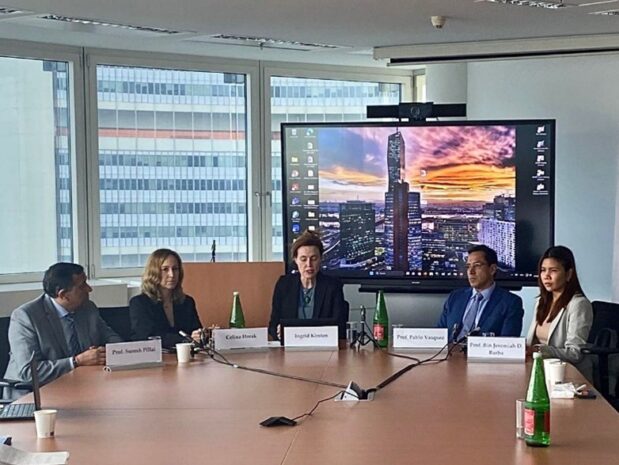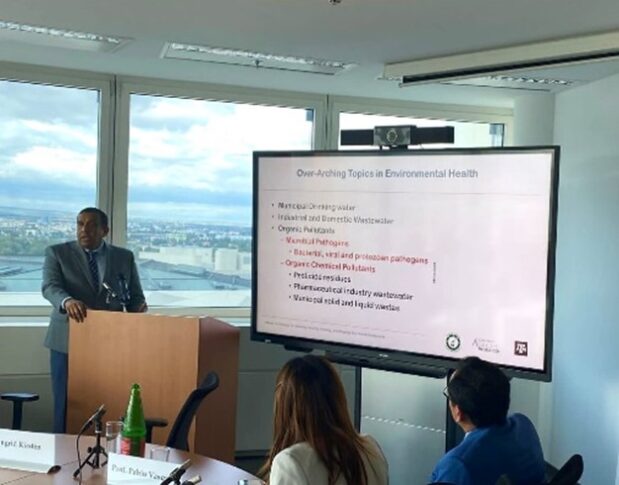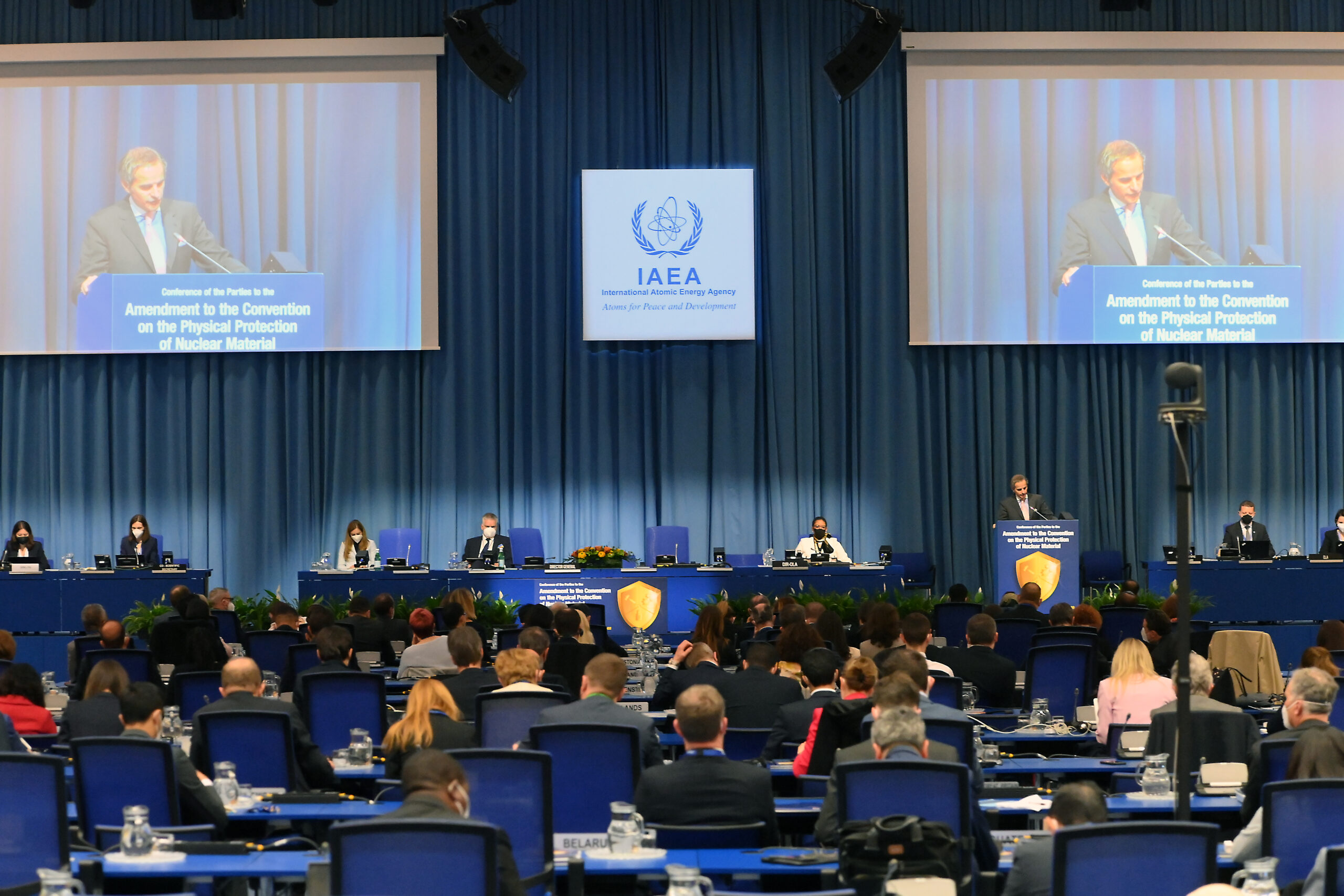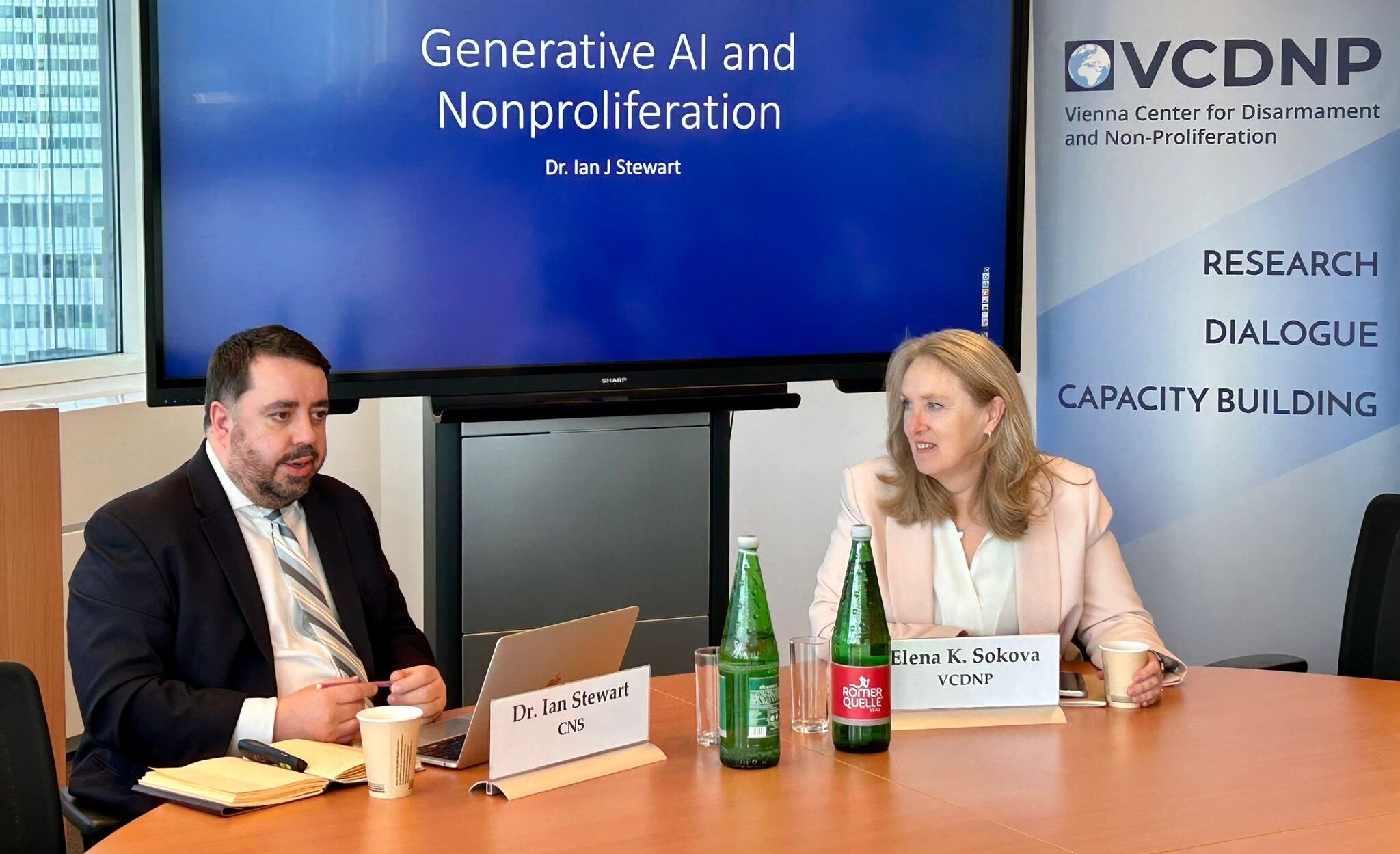
The International Atomic Energy Agency’s (IAEA) coordinated research projects (CRPs) on the safe and secure use of radiation technology have far-reaching benefits and have enabled rapid progress and groundbreaking developments in the medical, industrial, environmental, and cultural fields. Through these CRPs, the IAEA fosters innovation and collaboration, tackling global issues and contributing to sustainable development.
On 7 August 2023 the VCDNP, with the support of the United States Department of Energy, hosted a side event during the first Preparatory Committee meeting of the 11th Review Conference of the Treaty on the Non-Proliferation of Nuclear Weapons (NPT). The event focused on CRPs and their impact on expanding access to the benefits of ionising radiation. Senior Research Associate Ingrid Kirsten moderated the discussion.

Ingrid Kirsten opened the event, noting its particular relevance to the implementation of pillar three of the NPT and stressed the importance of expanding access to peaceful uses of nuclear science and technology, in particular the application of ionising radiation to help achieve the UN’s Sustainable Development Goals (SDGs).

Dr. Celina Horak explained the phases of CRP development from knowledge development through technology development, to business development and implementation. Once the technology is developed it is disseminated through the Technical Cooperation Programme to Member States for implementation. CRPS provide opportunities for global cooperation on solving common challenges and provide proven techniques which are tested and transferrable to all the Member States, and contribute to the UN SDGs. There are currently more than 140 active CRPs, involving 120 Member States, on cultural heritage, water resources management, the environment, health, food and agriculture, industry, and nuclear energy safety and security. The majority of CRPs centre around nuclear techniques for development and environmental protection, including efforts to replace traditional materials, to upcycle used materials and to restore value to waste.

Bin Jeremiah D. Barba discussed the issue of plastic and its linear trajectory from use to disposal, and the risk posed by plastic’s slow decomposition to the environment. She discussed the traditional forms of recycling and noted that none were efficient or environmentally friendly enough to deal with the 1.1 million tonnes of plastic waste produced each year. Ms Barba described the technique of radiation processing, where the structure and properties of plastic are altered, with little to no additional chemical reactants and at moderate conditions to extend the recyclability of plastic wastes. She described the application of this technique in an ongoing CRP entitled “Recycling of Polymer Waste for Structural and Non-Structural Materials by using Ionizing Radiation”, which is part of the IAEA’s NUTEC Plastics initiative. She spoke about the Philippines’ participation in this CRP, focusing on the recycling of post-consumer plastics for the development of high-performance products through electron beam (E-beam) irradiation. This process was implemented at an industry level by the company Envirotech to create sustainable housing material from recycled plastics. She explained that using E-beam technology creates more processible, miscible, and stronger materials and does not require an overhaul of the existing recycling infrastructure to implement.

In his presentation, Professor Pablo Vasquez discussed Brazil’s participation in the CRP on “Development and Implementation of Cultural Heritage Preservation using Ionizing Radiation Technology”. Gamma radiation is used to eliminate, inhibit, and sterilise insects and micro-organisms such as bacteria and fungi in the artefacts. Prof. Vasquez described the application of these techniques in Brazil where there is a multipurpose gamma radiation facility and numerous E-beam accelerators. Gamma radiation is however best suited for this work as it can provide lower doses of radiation than E-beam accelerators required for fragile artefacts. Gamma rays are also highly penetrating and can inactivate microbes with more depth than e-beam beta particles. Since 2004, more than 50,000 cultural artefacts have been preserved with this technology. He noted challenges in gaining authorisation to utilise these techniques, especially on precious artefacts of significance, and lack of awareness of the benefits of this technology.

Professor Suresh Pillai spoke about the impact of IAEA CRPs on technological advances. The IAEA, for more than 20 years, has made efforts to keep up with technological advances and the novel challenges facing humanity in environmental-, animal- and human health, and the chronology of CRPs over the years reflect this. Texas A&M University is an IAEA collaborating centre that is supporting the work of the New CRP: Radiation Technologies for Treatment of Emerging Organic Pollutants (EOPs) on the development and deployment of radiation technologies for the degradation of emerging organic pollutants. Water resource shortages is one of the grand global challenges and ionising technology can play a key role in water reuse. Texas A&M, in partnership with the US government, is developing E-beam technology for PFAS remediation. Per- and polyfluorinated chemical compounds (PFAS) otherwise known as “forever chemicals” were developed to be resistant to breakdown, such as in flame retardant clothing. They have been found in the blood of humans and animals and are developmental toxins that can lead to a range of diseases including cancer. Removing these chemicals from drinking is one of the key challenges today in waste and drinking water treatment. Prof Pillai noted that gamma and E-beam technologies are appropriate for low-level microbial pathogens/textiles and for water decolourisation, but that only E-Beam can be used to treat organic compounds in the water such as pesticides, antibiotics, drug residues and for treatment of PFAS. He noted that China has taken the lead on using this technology for waste and drinking water treatment. He also discussed the importance of education and collaboration and concluded that the “E-beam technology can clean, heal, feed, and shape this world and beyond”.
During the question-and-answer session, the speakers discussed the scalability of E-beam facilities for industrial processes, public perception of irradiation, security of radioactive sources, and the choice to use E-beam or gamma sources in irradiation. It was agreed that raising awareness among policy makers, industry and the public about the benefits of radiation technologies is a priority for expanding their use. While there are applications to which only gamma radiation is suited, E-beam technology is broadening the scope of application of isotopic radiation and is more attractive as a business proposition as there are no security related concerns as in the case of gamma radiation.
This event was developed with the support of the United States Department of Energy.



By continuing to use the site, you agree to the use of cookies. more information
The cookie settings on this website are set to "allow cookies" to give you the best browsing experience possible. If you continue to use this website without changing your cookie settings or you click "Accept" below then you are consenting to this.